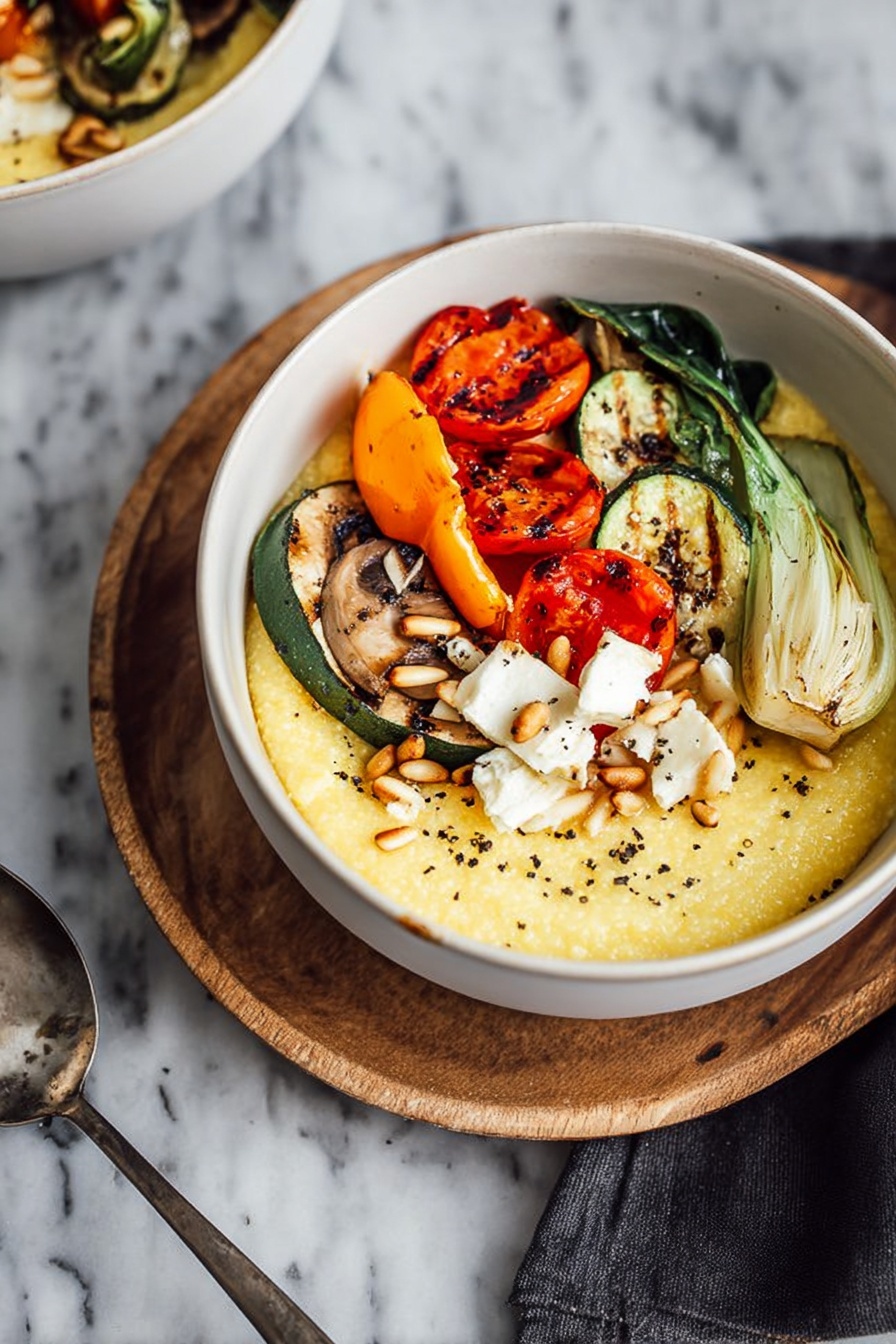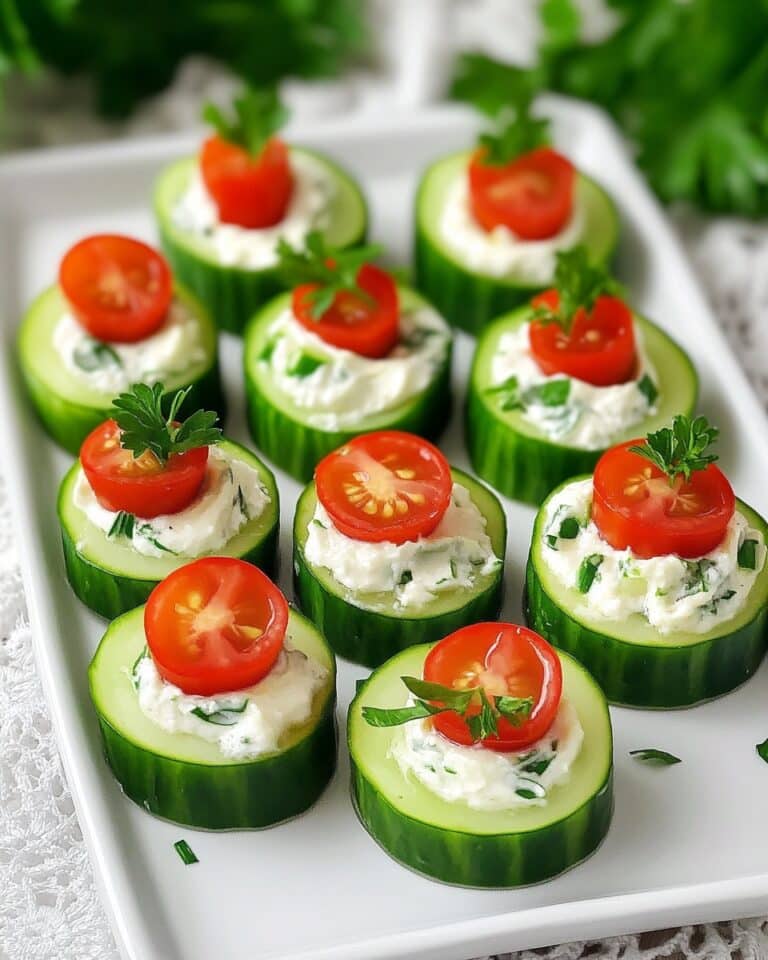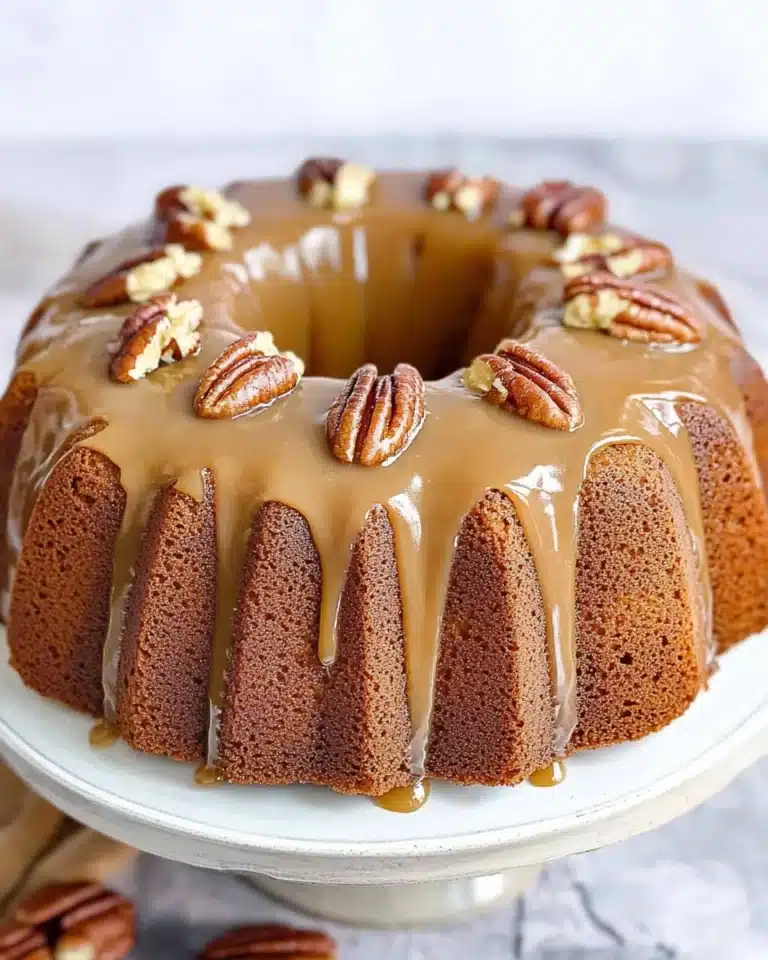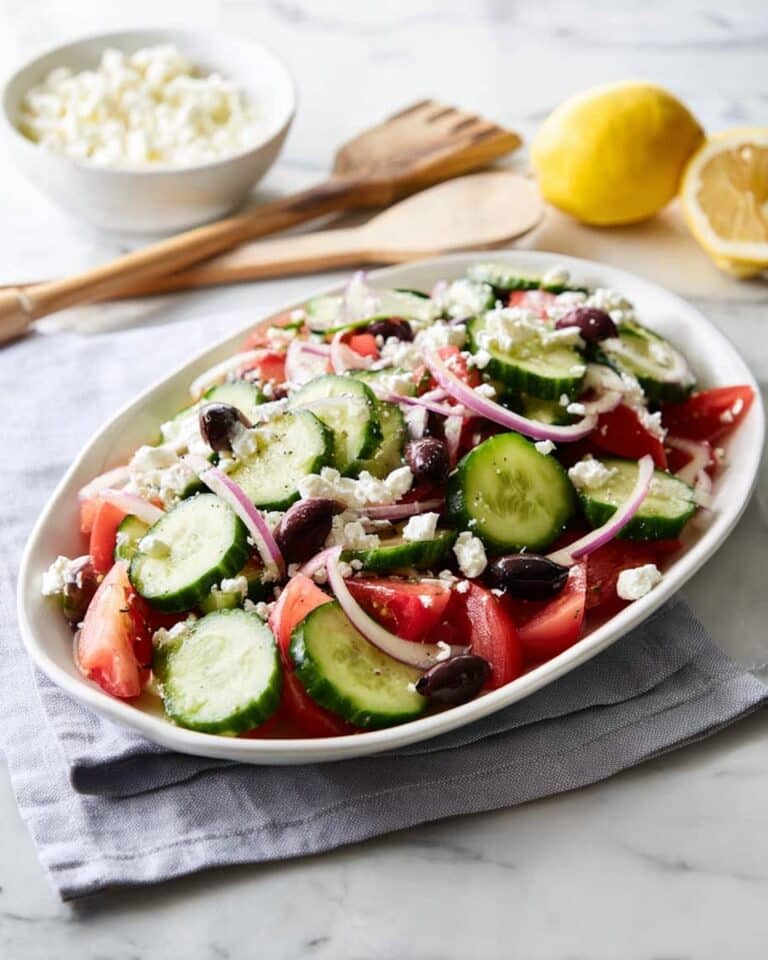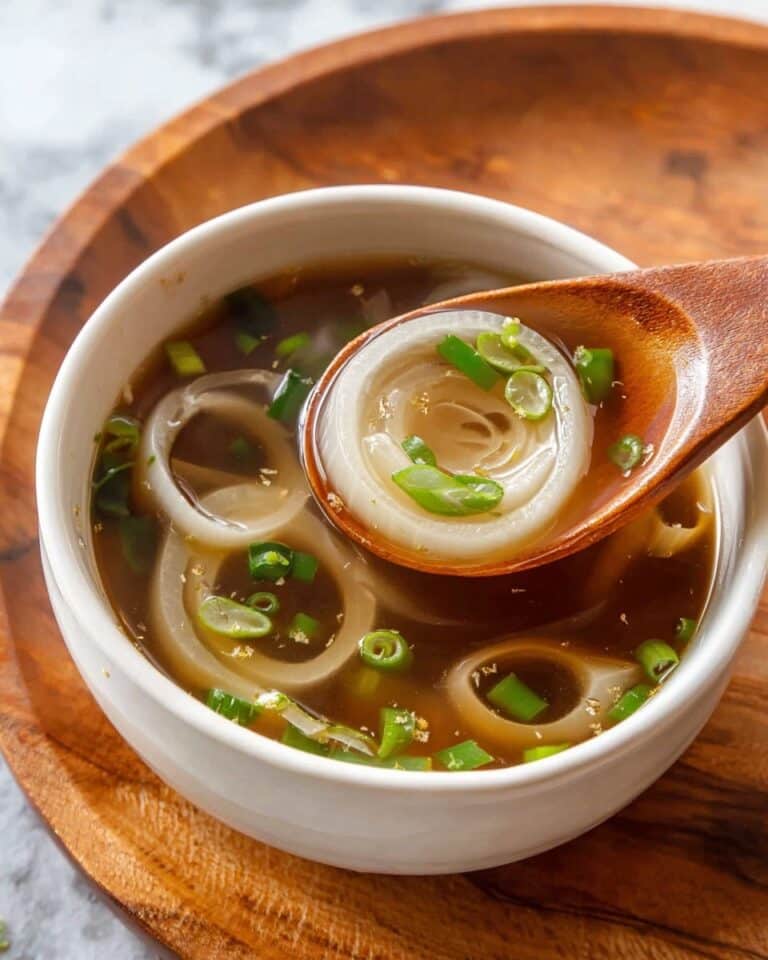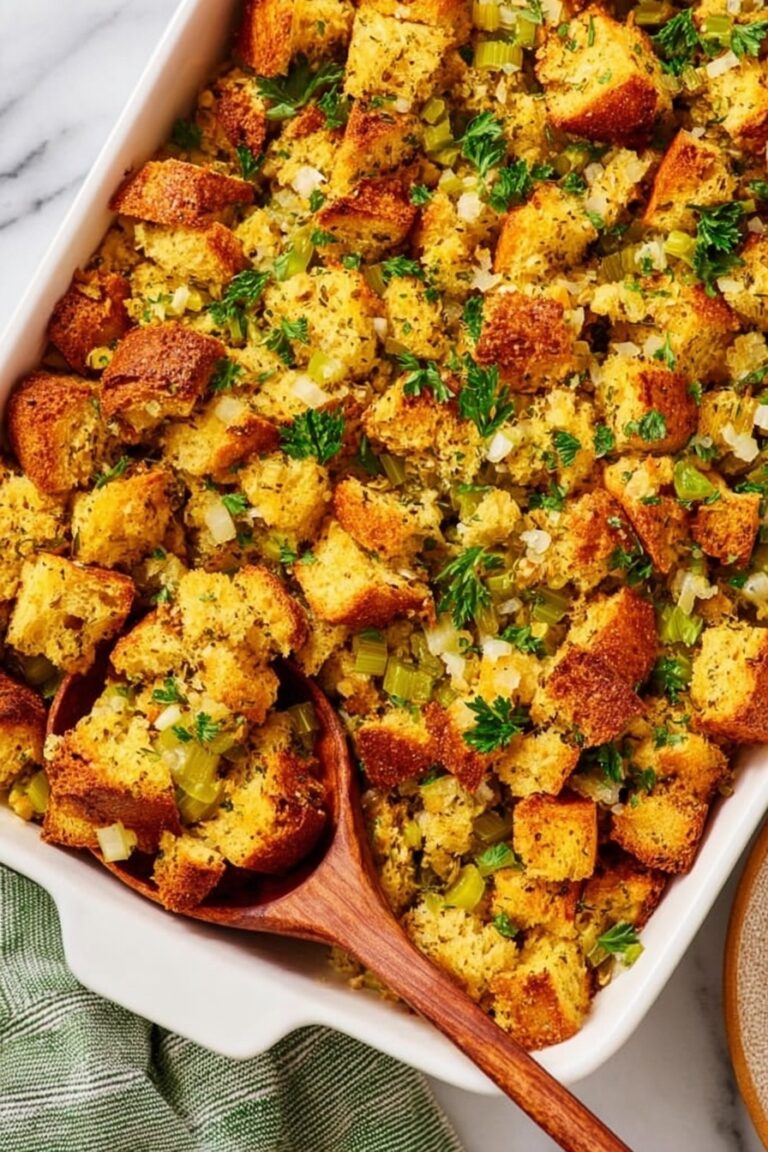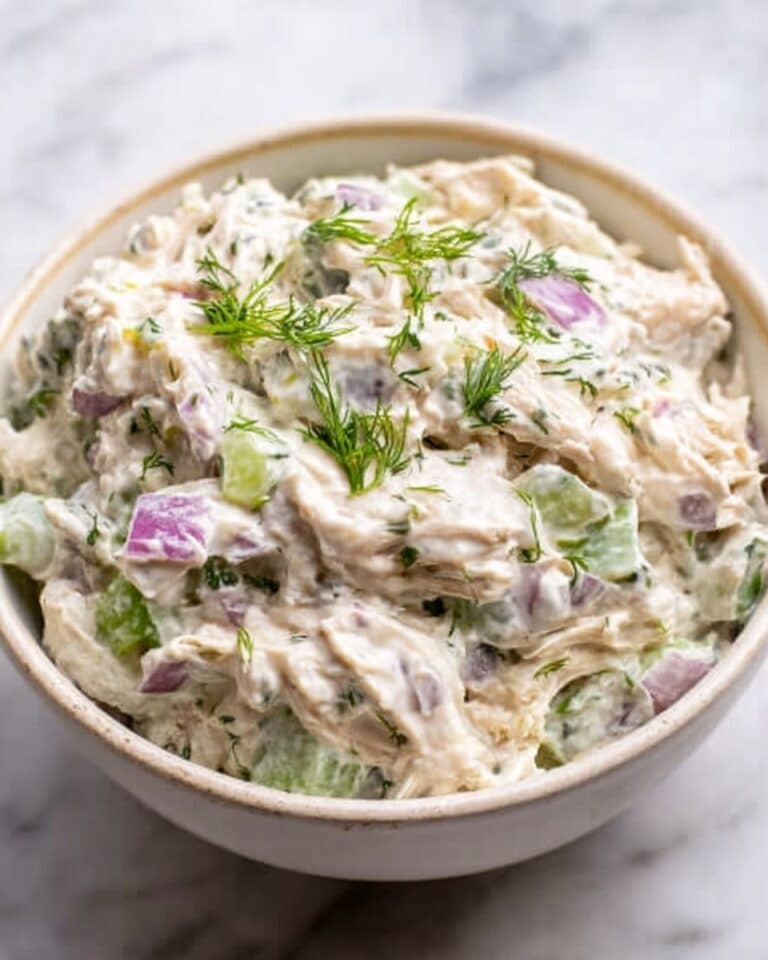If you’re looking for a cozy, comforting dish that’s bursting with flavor and feels like a warm hug on a plate, you’re in the right place. This Creamy Goat Cheese Polenta with Ratatouille Recipe is one of my all-time favorites to make when I want something hearty yet fresh. The creamy polenta paired with the vibrant, tender ratatouille makes it so satisfying—you’ll find yourself coming back to it again and again, trust me.
Why You’ll Love This Recipe
- Rich, Creamy Texture: The goat cheese melts into the polenta creating an irresistibly smooth base that’s simply dreamy.
- Fresh, Seasonal Veggies: Ratatouille’s blend of vegetables brings bright flavors that balance the richness beautifully.
- Comfort Food with a Twist: It’s familiar yet special enough to impress family and guests alike.
- Easy to Customize: You can tweak it for any season or dietary preference without sacrificing flavor.
Ingredients You’ll Need
I’ve found that using fresh, quality ingredients really makes this Creamy Goat Cheese Polenta with Ratatouille Recipe shine. Don’t be intimidated by the list—the veggies are straightforward, and choosing good polenta and goat cheese will pay off every time.
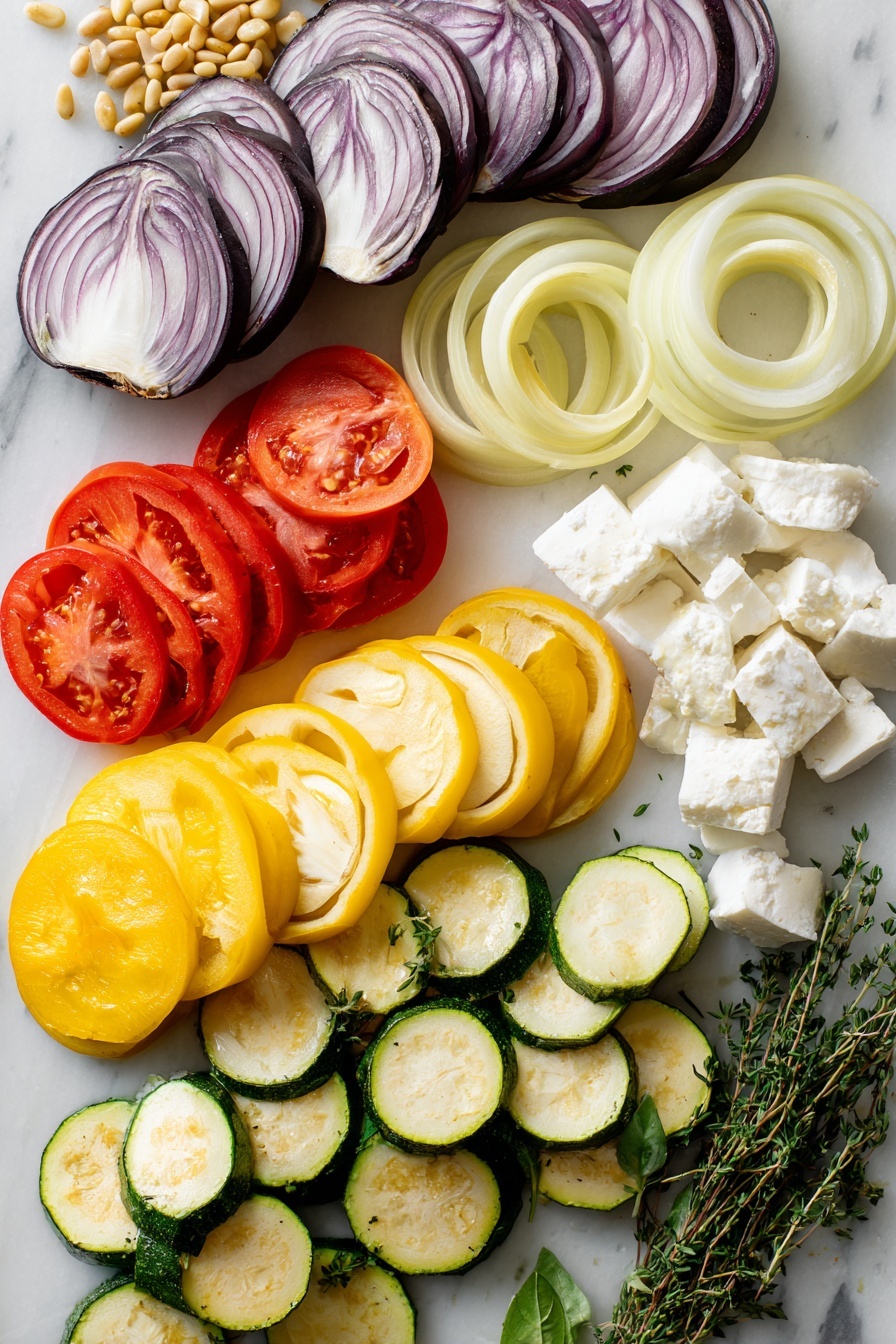
- Extra-virgin olive oil: A good olive oil enhances the ratatouille with fruity depth, so go for a flavorful one.
- Garlic clove: Rubbing the pan with garlic gives subtle aromatics that make a huge difference.
- Eggplant: Choose a firm globe eggplant without soft spots for the best texture.
- Zucchini and yellow squash: Fresh and firm vegetables add great color and sweetness to the ratatouille.
- Bell pepper: Red, yellow, or orange peppers work beautifully for sweetness and crunch.
- Roma tomatoes: These give you nice acidity and help create a luscious sauce as they cook down.
- Yellow onion: Thinly sliced for even cooking and sweetness.
- Garlic powder, kosher salt, and black pepper: Essential for seasoning your veggies evenly.
- Fresh thyme: Adds an earthy, herbaceous note that brightens the ratatouille.
- Chicken or vegetable stock: Using stock instead of water makes your polenta extra flavorful.
- Whole milk: Adds creaminess and keeps the polenta tender.
- Stone-ground polenta or yellow cornmeal: Stone-ground gives that authentic texture but whatever you find works.
- Goat cheese: This is the star—pick a soft, creamy variety for that melt-in-your-mouth feel.
- Toasted pine nuts: They give a delightful crunch and nutty contrast.
- Fresh basil leaves: Minced and added at the end for a fresh herb finish.
Variations
One of the things I love most about this Creamy Goat Cheese Polenta with Ratatouille Recipe is how flexible it is. You can really make it your own depending on what veggies you have or what flavors you prefer.
- Veggie Swap: I once tried using roasted butternut squash and mushrooms in place of some veggies, and it gave the ratatouille a richer, earthier vibe that my family couldn’t get enough of.
- Vegan Version: Substitute dairy milk and goat cheese for plant-based milk and a vegan cheese alternative, and it’s still deliciously creamy.
- Spicy Kick: Adding a pinch of red pepper flakes to the ratatouille in the oven brought in a subtle heat that we all enjoyed.
- Herb Medley: Try rosemary or oregano alongside thyme to change up the aromatic profile.
How to Make Creamy Goat Cheese Polenta with Ratatouille Recipe
Step 1: Roasting the Ratatouille to Perfection
Start by preheating your oven to 375°F and greasing an 8×8-inch baking dish with 2 tablespoons of olive oil. Here’s the trick: rub the cut sides of a halved garlic clove all over the bottom and sides of the dish—this subtle garlic aroma is a gamechanger. Then, discard the garlic. Lay out your eggplant, zucchini, squash, bell pepper, tomato, and onion slices on a clean surface, drizzle them with the remaining olive oil, and sprinkle with garlic powder, salt, and pepper. Toss gently so everything’s evenly coated.
Arrange the veggies in your dish in a circular pattern, alternating colors for a beautiful presentation. Scatter fresh thyme leaves over the top, cover the dish, and bake for 20 minutes. Then, uncover and bake for another 25 minutes or until the veggies are tender and lightly caramelized. This slow roasting brings out the sweetness and melds the flavors beautifully.
Step 2: Cooking the Creamy Polenta
While your ratatouille bakes, bring 6 cups of chicken or vegetable stock with 2 cups of whole milk to a boil in a medium saucepan. Season with salt and pepper. Slowly whisk in 1½ cups of stone-ground polenta to avoid lumps—this patience pays off big time. Keep stirring often over medium heat for about 30 minutes, until the polenta thickens and starts pulling away from the sides of the pan.
Once cooked, remove the pan from heat and stir in 6 ounces of creamy goat cheese. I love how it melts into the warm polenta, making it absolutely luscious. If you want it softer or thinner, just add a splash more milk. The key is to taste and adjust for your preferred texture.
Step 3: Bringing It All Together
Dish out the polenta evenly into bowls or plates, then generously spoon your freshly roasted ratatouille on top. Crumble a little more goat cheese over the dish, sprinkle with toasted pine nuts for crunch, and finish with minced fresh basil for a fragrant, colorful touch. This final step really elevates the dish and makes it feel like a special occasion—even if it’s just a Tuesday night dinner.
Pro Tips for Making Creamy Goat Cheese Polenta with Ratatouille Recipe
- Slow, Steady Stirring: Stir the polenta often—this prevents lumps and gives that perfect creamy texture every time.
- Garlic-Rubbed Pan: Don’t skip rubbing the baking dish with garlic; it infuses the veggies with gentle flavor that surprised me the first time I tried it.
- Evenly Sliced Veggies: Try to keep all your vegetable slices about the same thickness so they roast uniformly.
- Oil Quality Matters: Using quality extra-virgin olive oil truly impacts the final flavor—it’s worth investing a bit here.
How to Serve Creamy Goat Cheese Polenta with Ratatouille Recipe
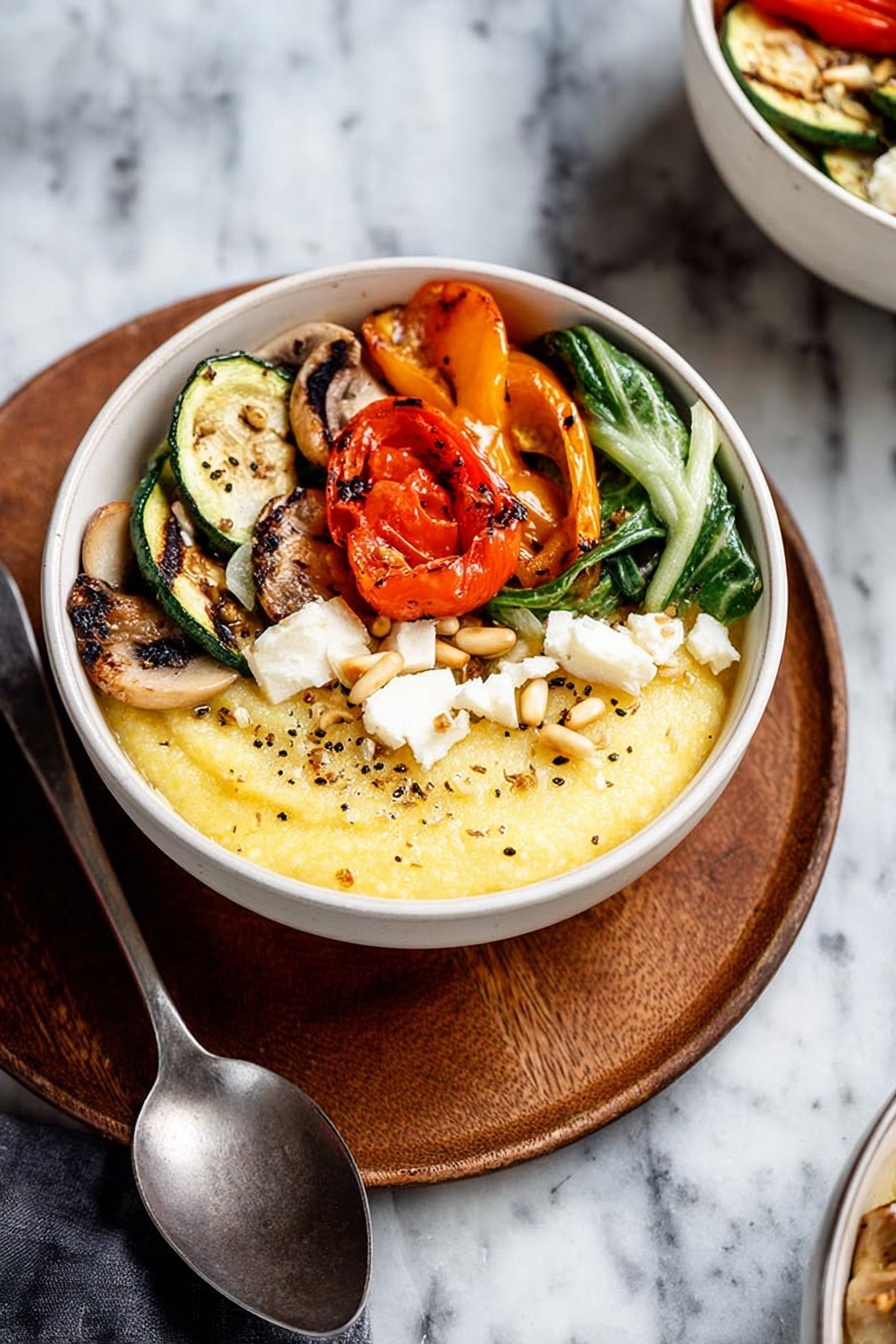
Garnishes
I like to top this dish with extra crumbled goat cheese because it adds a fresh, tangy burst. Toasted pine nuts give it delightful crunch, and minced fresh basil adds herbal brightness that wakes up all the flavors. Sometimes I toss on a drizzle of good olive oil or sprinkle a pinch of flaky sea salt just before serving—it’s the little touches that make it special.
Side Dishes
This recipe is pretty filling on its own, but if you want sides, I love pairing it with a crisp green salad tossed in lemon vinaigrette or some garlicky sautéed greens like kale or Swiss chard. A crusty baguette is another winner to soak up any extra sauce from the ratatouille.
Creative Ways to Present
Whenever guests come over, I like to serve the polenta spread in a shallow dish topped with ratatouille arranged in a colorful spiral, then sprinkle the pine nuts and basil all over. It turns a rustic dish into something feast-worthy without extra fuss. You can also layer the polenta and ratatouille in clear glass bowls for a pretty layered effect that shows off those vibrant veggies.
Make Ahead and Storage
Storing Leftovers
I usually store leftover polenta and ratatouille separately in airtight containers in the fridge. This keeps the textures better—polenta can get a bit firm when cold, but reheating works great. The ratatouille holds up beautifully and often tastes even better the next day as the flavors meld.
Freezing
Freezing polenta can be tricky because it changes texture, but if you need to, spread it thin in a freezer-safe container. Ratatouille freezes really well—just thaw overnight in the fridge. When you’re ready to eat, thaw in the fridge and reheat gently.
Reheating
I find gently reheating polenta on the stove with a splash of milk helps restore creaminess. Ratatouille can be warmed in a saucepan over medium heat or microwaved. Avoid overheating to keep that fresh veggie flavor alive.
FAQs
-
Can I make the polenta without goat cheese?
Absolutely! While goat cheese adds a tangy creaminess I love, you can substitute with cream, butter, or even Parmesan for a different but delicious twist.
-
Is it okay to use regular cornmeal instead of stone-ground polenta?
Yes, regular cornmeal works fine, though the texture will be a bit finer and less rustic. Stone-ground polenta has more texture and a more pronounced corn flavor.
-
Can I prepare the ratatouille ahead of time?
Definitely! Ratatouille actually tastes better after sitting overnight as the flavors deepen. Just reheat gently before serving on your creamy polenta.
-
How do I prevent the polenta from becoming lumpy?
Slowly whisk the polenta into the boiling liquid and stir frequently as it cooks. This helps break up clumps and creates a smooth, creamy texture.
-
Can I make this recipe vegan?
Yes! Swap the goat cheese for a plant-based alternative and use your favorite non-dairy milk instead of whole milk. Use vegetable stock for a fully vegan meal.
Final Thoughts
This Creamy Goat Cheese Polenta with Ratatouille Recipe holds a special place in my heart because it reminds me of quiet evenings at home when fresh veggies and simple ingredients come together to create pure magic. I absolutely love how the creamy, tangy polenta balances the roasted vegetables’ earthiness, and how every bite feels lovingly crafted without a ton of fuss. I encourage you to give this recipe a try—you’ll end up with a cozy meal that feels both elegant and comfortably familiar, perfect for sharing with family or treating yourself on a weeknight.
Print
Creamy Goat Cheese Polenta with Ratatouille Recipe
- Prep Time: 20 minutes
- Cook Time: 45 minutes
- Total Time: 1 hour 5 minutes
- Yield: 6 servings
- Category: Main Course
- Method: Baking
- Cuisine: Mediterranean
- Diet: Vegetarian
Description
This Creamy Goat Cheese Polenta with Ratatouille recipe combines rich, smooth polenta infused with tangy goat cheese topped with a colorful, baked medley of seasonal vegetables. The ratatouille is baked to tender perfection with herbs and spices, while the polenta is slowly cooked to creamy goodness. Finished with toasted pine nuts and fresh basil, this comforting dish offers vibrant Mediterranean flavors ideal for a wholesome dinner.
Ingredients
Ratatouille
- 4 tablespoons extra-virgin olive oil
- 1 garlic clove, halved
- 1 small globe eggplant, cut into ¼-inch-thick slices
- 1 medium zucchini, cut into ¼-inch-thick slices
- 1 medium yellow squash, cut into ¼-inch-thick slices
- 1 yellow, red, or orange bell pepper, cut into ¼-inch-thick slices
- 4 Roma tomatoes, cut into ¼-inch-thick slices
- 1 large yellow onion, thinly sliced
- 1 teaspoon garlic powder
- 1 teaspoon kosher sea salt
- Freshly cracked black pepper, to taste
- 5 sprigs fresh thyme, leaves removed
Polenta
- 6 cups chicken or vegetable stock
- 2 cups whole milk, plus more as needed
- 1½ teaspoons kosher salt
- ½ teaspoon freshly cracked black pepper
- 1½ cups stone-ground polenta or yellow cornmeal
- 8 ounces goat cheese (6 oz for stirring in, 2 oz for topping)
- ¼ cup toasted pine nuts
- 10 to 12 fresh basil leaves, minced
Instructions
- Preheat the oven and prepare baking dish: Preheat your oven to 375°F (190°C) and position a rack in the center. Grease an 8×8-inch baking dish with 2 tablespoons of olive oil. Rub the cut sides of the garlic clove all over the bottom and sides of the dish to impart subtle garlic flavor, then discard the garlic clove.
- Prepare the vegetables: On a clean surface, spread out the sliced eggplant, zucchini, yellow squash, bell pepper, tomatoes, and sliced onion. Drizzle them evenly with the remaining 2 tablespoons of olive oil. Sprinkle garlic powder, kosher salt, and freshly cracked black pepper to taste. Toss gently to coat the vegetables thoroughly.
- Arrange the ratatouille: Arrange the vegetable slices in the prepared baking dish in a circular pattern, alternating each vegetable type starting from the outer edge and working toward the center. Scatter fresh thyme leaves evenly over the vegetables.
- Bake the ratatouille: Cover the baking dish and bake for 20 minutes in the preheated oven. Remove the cover and continue to bake for an additional 25 minutes or until the vegetables are tender and lightly caramelized.
- Make the polenta base: While the ratatouille bakes, combine chicken or vegetable stock, whole milk, kosher salt, and freshly cracked black pepper in a medium saucepan. Bring the mixture to a boil over high heat.
- Add polenta and cook: Reduce heat to medium and slowly whisk in the stone-ground polenta. Cook the polenta, stirring often to prevent lumps, until it thickens and pulls away from the sides of the pan, about 30 minutes.
- Finish polenta with goat cheese: Remove the polenta from heat. Stir in 6 ounces of goat cheese until melted and creamy. If desired, add a splash more milk to loosen the texture for a thinner consistency.
- Serve the dish: Divide the creamy goat cheese polenta evenly among six bowls. Spoon a generous portion of the baked ratatouille over the polenta. Garnish with crumbled goat cheese, toasted pine nuts, and minced fresh basil leaves for color and flavor.
Notes
- Use either chicken or vegetable stock depending on dietary preference or for vegetarian version use vegetable stock.
- Adjust the amount of milk added to the polenta based on your preferred consistency—more for creamier and thinner polenta.
- To save time, vegetables can be sliced in advance but for best flavor slice fresh before baking.
- To toast pine nuts, place them in a dry skillet over medium heat for 3-4 minutes, shaking often until golden and fragrant.
- This dish pairs well with a crisp green salad or crusty bread to soak up the creamy polenta and ratatouille juices.
Nutrition
- Serving Size: 1 bowl (approx. 1/6th of total recipe)
- Calories: 420 kcal
- Sugar: 7 g
- Sodium: 700 mg
- Fat: 18 g
- Saturated Fat: 7 g
- Unsaturated Fat: 9 g
- Trans Fat: 0 g
- Carbohydrates: 48 g
- Fiber: 6 g
- Protein: 14 g
- Cholesterol: 35 mg

